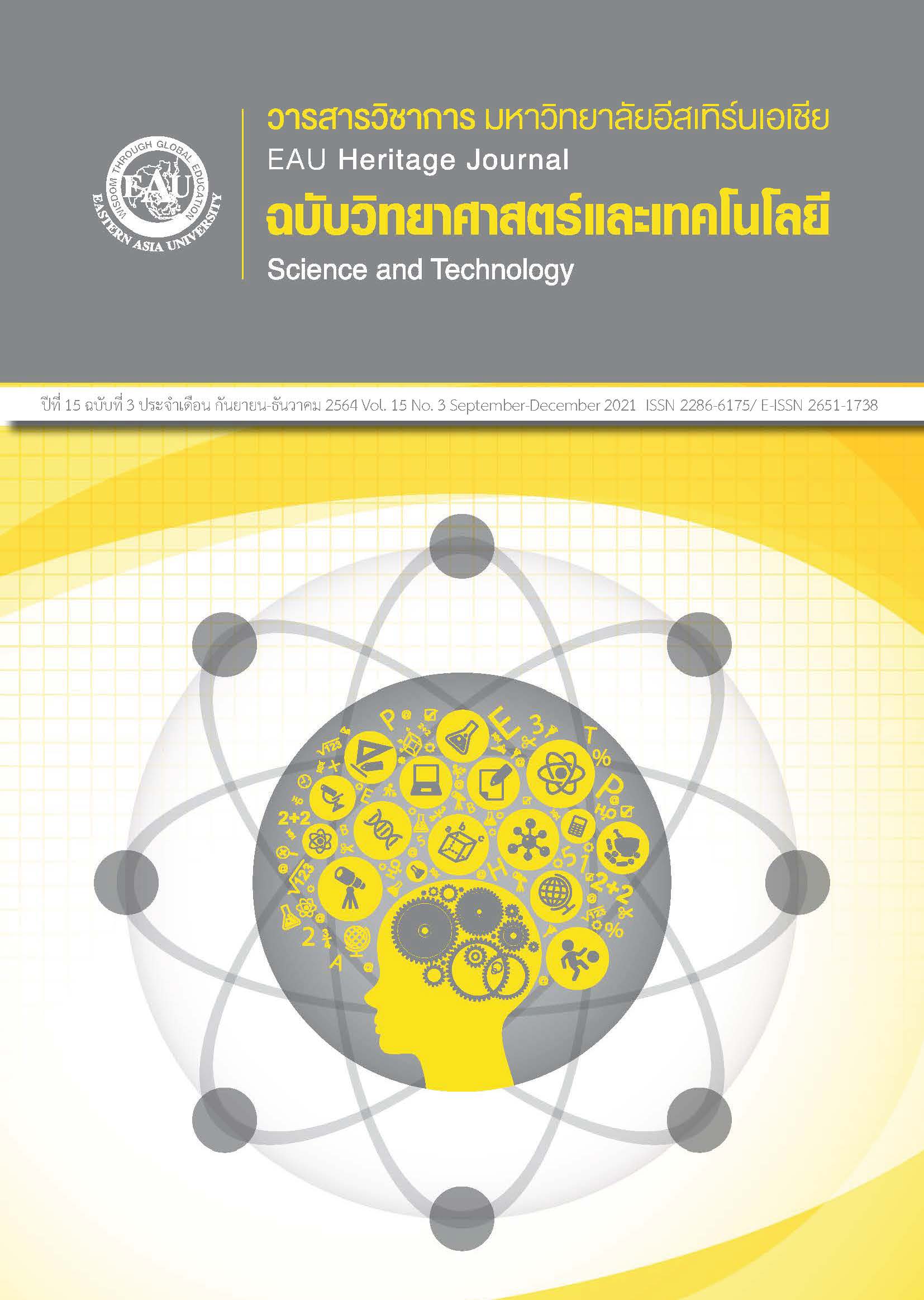บทบาทพยาบาลในการดูแลผู้ป่วยที่มีภาวะหายใจลำบากเฉียบพลัน ที่ใส่เครื่องช่วยหายใจ
คำสำคัญ:
บทบาทพยาบาล; ภาวะหายใจลำบากเฉียบพลัน; เครื่องช่วยหายใจบทคัดย่อ
กลุ่มอาการหายใจลำบากเฉียบพลัน เป็นการบาดเจ็บที่ปอดมีความสัมพันธ์กับอัตราการตายสูง ดังนั้นพยาบาลจึงมีบทบาทสำคัญในการดูแลผู้ป่วยกลุ่มนี้ ประกอบไปด้วย (1) การตั้งค่าปริมาตรของก๊าซต่ำโดยขนาดต่ำกว่า 6 มิลลิลิตรต่อกิโลกรัมของน้ำหนักในอุดมคติ (2) การตั้งค่าแรงดันบวกค้างในขณะสิ้นสุดการหายใจออกที่เหมาะสม (3) การประเมินระดับของความดันไม่เกินกว่า 30 ซม.น้ำ (4) การรักษาประคับประคองแบบใช้ยา ได้แก่ การใช้ดมแก๊ส เพื่อขยายหลอดเลือดแดงในปอด การใช้ยาหย่อนกล้ามเนื้อ การใช้อัลบูลมินร่วมกับยาขับปัสสาวะ เพื่อเพิ่มระดับออกซิเจนในเม็ดเลือดแดง การใช้ยาสเตรียรอยด์ เพื่อควบคุมการหลั่งคอร์ติซอล การจัดการสารน้ำของผู้ป่วยที่เหมาะสม (5) การใช้เครื่องพยุงการทำงานของหัวใจและปอด เพื่อพักการทำงานของหัวใจและปอด (6) การจัดท่านอนคว่ำ เพื่อทำให้การแลกเปลี่ยนก๊าซมีประสิทธิภาพดีขึ้น (7) การให้โภชนาการที่ถูกต้องและเหมาะสม (8) การประเมินผิวหนัง ซึ่งประกอบไปด้วยการประเมินปัจจัยเสี่ยง การดูแลและการปกป้องผิวหนัง (9) การเสริมสร้างความเข้มแข็งของญาติผู้ดูแล ผ่านมุมมองเชิงบวก เพื่อส่งเสริมความเข้าใจและลดความวิตกกังวล พยาบาลต้องตระหนักและมีความรู้ในการดูแลผู้ป่วยกลุ่มอาการหายใจลำบากเฉียบพลัน เพื่อลดภาวะแทรกซ้อนขณะรับการรักษาและฟื้นหายจากภาวะเจ็บป่วย สามารถจำหน่ายกลับบ้านได้
เอกสารอ้างอิง
Afshari, A., Bastholm Bille, A., & Allingstrup, M. (2017). Aerosolized prostacyclins for Acute Respiratory Distress Syndrome (ARDS). The Cochrane Database of Systematic Reviews, 7(7), CD007733. Advance online publication. https://doi.org/10.1002/14651858.CD007733.pub3
Apinyalangkon, K., Phathong, W., & Phumarin, R. (2016). Effectiveness of using clinical practice guidelines for respiratory management in pediatric patients with pneumonia. Journal of the College of Nursing Phra Pokklao, Chanthaburi, 27, 139-151. (in Thai)
ARDS Definition Task Force, Ranieri, V. M., Rubenfeld, G. D., Thompson, B. T., Ferguson, N. D., Caldwell, E., Fan, E., Camporota, L., & Slutsky, A. S. (2012). Acute Respiratory Distress Syndrome: The Berlin Definition. JAMA, 307(23), 2526–2533. https://doi.org/10.1001/jama.2012.5669
Cruz, F. F., & Rocco, P. (2019). Cell therapy for Acute Respiratory Distress Syndrome patients: The START study. Journal of thoracic disease, 11(Suppl 9), S1329–S1332. https://doi.org/10.21037/jtd.2019.04.22
Dellinger, R. P., Levy, M. M., Rhodes, A., Annane, D., Gerlach, H., Opal, S. M., Sevransky, J. E., Sprung, C. L., Douglas, I. S., Jaeschke, R., Osborn, T. M., Nunnally, M. E., Townsend, S. R., Reinhart, K., Kleinpell, R. M., Angus, D. C., Deutschman, C. S., Machado, F. R., Rubenfeld, G. D., Webb, S. A., Beale, R. J., Vincent, J. L., Moreno, R., & Surviving Sepsis Campaign Guidelines Committee including the Pediatric Subgroup. (2013). Surviving sepsis campaign: International guidelines for management of severe sepsis and septic shock: 2012. Critical Care Medicine: February 2013, 41(2), 580-637. doi: 10.1097/CCM.0b013e31827e83af. PMID: 23353941.
Fanelli, V., Vlachou, A., Ghannadian, S., Simonetti, U., Slutsky, A. S., & Zhang, H. (2013). Acute Respiratory Distress Syndrome: New definition, current and future therapeutic options. Journal of Thoracic Disease, 5(3), 326–334. https://doi.org/10.3978/j.issn.2072-1439.2013.04.05
García de Acilu, M., Leal, S., Caralt, B., Roca, O., Sabater, J., & Masclans, J. R. (2015). The role of Omega-3 Polyunsaturated Fatty Acids in the treatment of patients with Acute Respiratory Distress Syndrome: A clinical review. BioMed Research International, 2015, 653750. https://doi.org/10.1155/2015/653750
Gebistorf, F., Karam, O., Wetterslev, J., & Afshari, A. (2016). Inhaled Nitric Oxide for Acute Respiratory Distress Syndrome (ARDS) in children and adults. The Cochrane Database of Systematic Reviews, 2016(6), CD002787. https://doi.org/10.1002/14651858.CD002787.pub3
Kliangprom, J., & Putthivanich S. (2017). Prevention of skin breakdown in the elderly. The Southern College Network Journal of Nursing and Public Health, 4(3), 249-258. (in Thai)
Lakhal, K., Ehrmann, S., Benzekri-Lefèvre, D., Runge, I., Legras, A., Dequin, P. F., Mercier, E., Wolff, M., Régnier, B., & Boulain, T. (2011). Respiratory pulse pressure variation fails to predict fluid responsiveness in Acute Respiratory Distress Syndrome. Critical Care (London, England), 15(2), R85. https://doi.org/10.1186/cc10083
Lawang, W., & Sunsern, R. (2016). Positive aspect of caregiving: Crucial concepts enhancing family caregivers’strength. Journal of Nursing and Education, 9(3), 1-9. (in Thai)
Le, S., Pellegrini, E., Green-Saxena, A., Summers, C., Hoffman, J., Calvert, J., & Das, R. (2020). Supervised machine learning for the early prediction of Acute Respiratory Distress Syndrome (ARDS). Journal of Critical Care, 60, 96–102. https://doi.org/10.1016/j.jcrc.2020.07.019
Liusrisakul, C. (2010). Concept in ARDS. In E. Phumipichet, C. Permpikul (Eds), Crtical care: At difficult time (pp. 333-346). Bangkok: Beyond Enterprise. (in Thai)
Máca, J., Jor, O., Holub, M., Sklienka, P., Burša, F., Burda, M., Janout, V., & Ševčík, P. (2017). Past and present ARDS Mortality Rates: A systematic review. Respiratory Care, 62(1), 113–122. https://doi.org/10.4187/respcare.04716.
Munshi, L., Del Sorbo, L., Adhikari, N., Hodgson, C. L., Wunsch, H., Meade, M. O., Uleryk, E., Mancebo, J., Pesenti, A., Ranieri, V. M., & Fan, E. (2017). Prone position for Acute Respiratory Distress Syndrome. A systematic review and meta-analysis. Annals of the American Thoracic Society, 14(Suppl 4), S280–S288. https://doi.org/10.1513/AnnalsATS.201704-343OT
National Heart, Lung and Blood Institute Acute Respiratory Distress Syndrome (ARDS) Clinical Trials Network, Rice, T. W., Wheeler, A. P., Thompson, B. T., Steingrub, J., Hite, R. D., Moss, M., Morris, A., Dong, N., & Rock, P. (2012). Initial trophic vs full enteral feeding in patients with acute lung injury: The EDEN randomized trial. JAMA, 307(8), 795–803. https://doi.org/10.1001/jama.2012.137
Needham, D. M., Yang, T., Dinglas, V. D., Mendez-Tellez, P. A., Shanholtz, C., Sevransky, J. E., Brower, R. G., Pronovost, P. J., & Colantuoni, E. (2015). Timing of low tidal volume ventilation and intensive care unit mortality in Acute Respiratory Distress Syndrome. A prospective cohort study. American journal of respiratory and critical care medicine, 191(2), 177–185. https://doi.org/10.1164/rccm.201409-1598OC
Panichhot, A. (2015). Acute Respiratory Distress Syndrome (ARDS). In D. Sathaworn, K. Piyavejwirat, S. Poonthavorn (Eds), Critical care medicine: The acute care (pp. 232-241). Bangkok: Beyond Enterprise (in Thai)
Petrucci, N., & De Feo, C. (2013). Lung protective ventilation strategy for the Acute Respiratory Distress Syndrome. The Cochrane Database of Systematic Reviews, 2013(2), CD003844. https://doi.org/10.1002/14651858.CD003844.pub4
Pornsirirat, T., & Thongyoo, S. (2016). Nursing patients with respiratory failure, using a booster of the heart and lungs (Extracorporeal membrance oxygen nation, ECMO). Siriraj Medical Bulletin (SMB), 9(1), 44-50. (in Thai)
Tsai-Nguyen, G., & Modrykamien, A. M. (2018). Use of neuromuscular blocking agents in Acute Respiratory Distress Syndrome. Proceedings (Baylor University. Medical Center), 31(2), 177–179. https://doi.org/10.1080/08998280.2017.1416237
Walkey, A. J., Summer, R., Ho, V., & Alkana, P. (2012). Acute Respiratory Distress Syndrome: epidemiology and management approaches. Clinical Epidemiology, 4, 159–169. https://doi.org/10.2147/CLEP.S28800
Wunderink, R. G. (2015). Corticosteroids for severe community-acquired pneumonia: Not for everyone. JAMA, 313(7), 673–674. https://doi.org/10.1001/jama.2015.115







